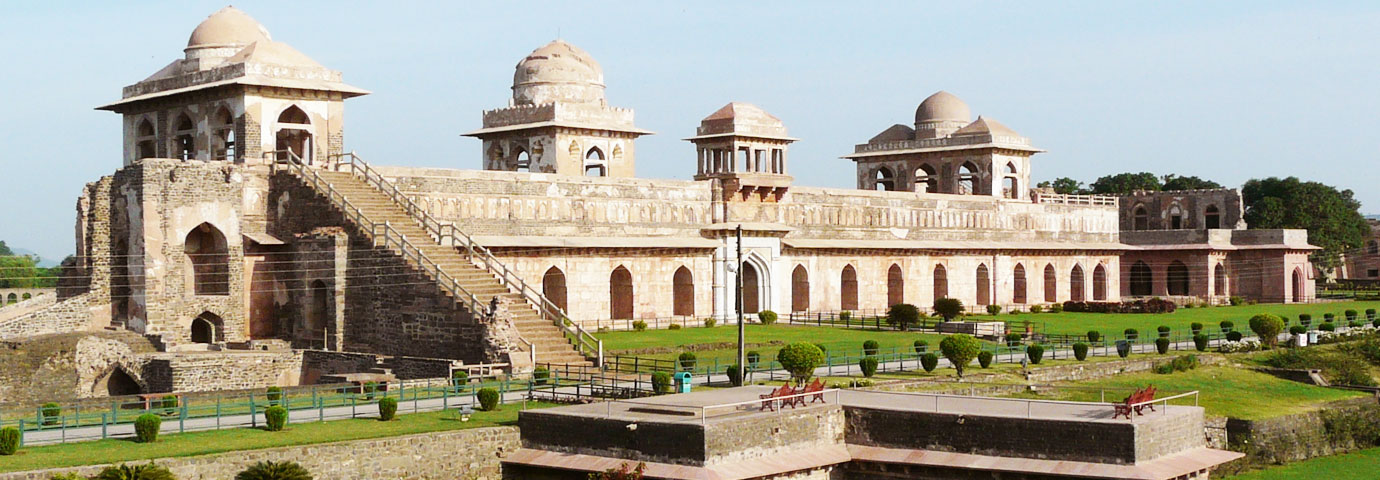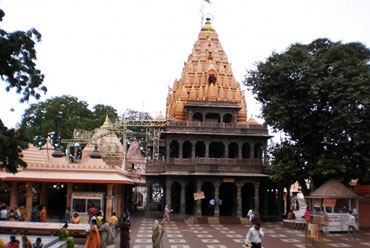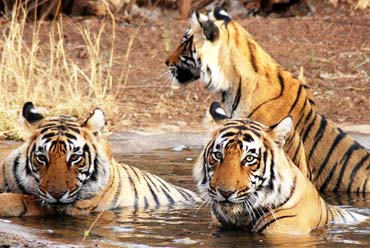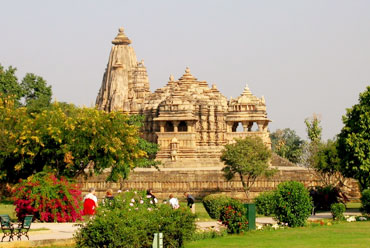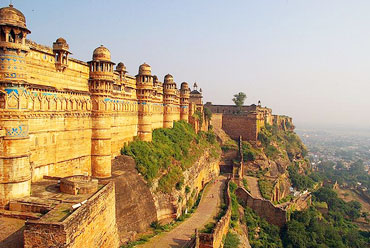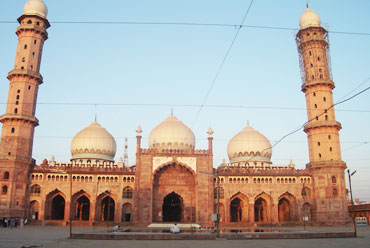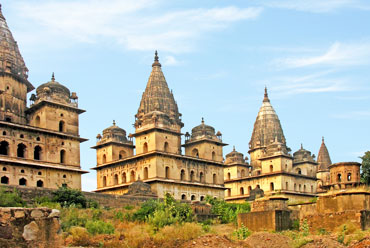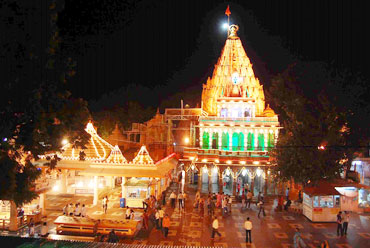Tourist Attractions in Mandu
For convenience, the buildings of Mandu can be divided in three groups: the Royal Enclave Group, the Village Group, and the Rewa Kund Group.
Royal Enclave Group
Jahaz Mahal (or the Ship Palace) is probably the most famous building in Mandu. This ship-like structure was constructed by Ghiyas-ud-din, son of Mohammed Shah, for his harem. According to the legends, this harem was home to 15,000 maidens. There are two lakes on the east and west side of the palace that create a perfect illusion of a ship with its rectangular shape.
Taveli Mahal is located just south of Jahaz Mahal and now houses the antiquity gallery of the Archeological Survey of India.
Hindola Mahal (or Swing Palace) was a pleasure dome that gives the impression that the inward slopes of the walls are swaying.
Champa Baoli is an interesting step-well on the north edge of the tank situated there. It was a popular hot-weather retreat and featured cool wells and bathrooms.
Village Group - Jama Masjid is a huge mosque built in 1454 dominating the village of Mandu and is considered the finest example of Afghan architecture in India.
Hoshang's Tomb is located immediately behind the mosque and reputed to be the oldest marble structure in India. The tomb was constructed in 1435 and depicts typical Hindu influences including carved marble lattice screens (jali). It is said that Shahjahan sent his architects to study this double-domed structure before constructing Taj Mahal.
Ashrafi Mahal was originally built as a madarsa (a Muslim religious school), but later extended to become Mohammed Shah's tomb. Now only the ruins of this building are visible.
The Jain Temple is a complex of numerous buildings. There is also a Jain museum in the complex.
Rewa Kund Group - Baz Bahadur was the legendary king featuring in many folk stories of India for his love with Rupmati. He was the last independent king of Malwa. His palace was constructed in 1509 beside Rewa Kund. The palace displays a curious mix of Rajasthani and Mughal style of architecture. There was a water lift at the northern end of the tank to supply water to the tank.
Rupmati's Pavilion is situated on the very edge of Mandu Fort. It is a very romantic building, a perfect setting for fairytale romance. Nevertheless, unfortunately, the love story of Baz Bahadur and Rupmati had a tragic end. It is said that Akbar attacked Mandu for the sake of Rupmati and Baz Bahadur fled Mandu leaving Rupmati to poison herself.
There are some other monuments in Mandu like Darya Khan's Tomb, Hathi Mahal, and Neelkanth Palace that can be visited.
Places Around Mandu
Bagh Caves is around 50 km off Mandu on the road between Indore and Vadodra in Gujarat. These Buddhist caves date from AD 400 to 700 and were in a poor condition until few years back when the restoration work began. There are some government guesthouses and dak bungalows nearby.

